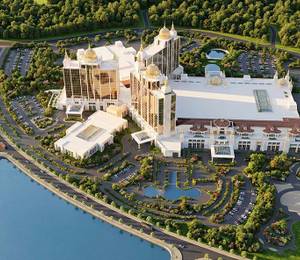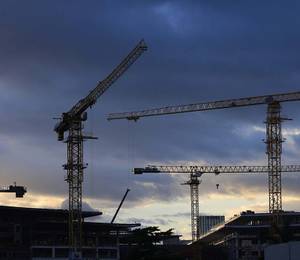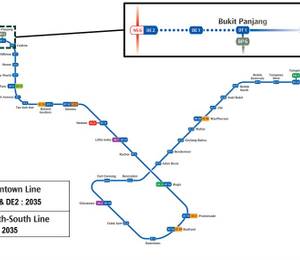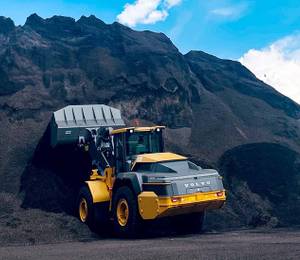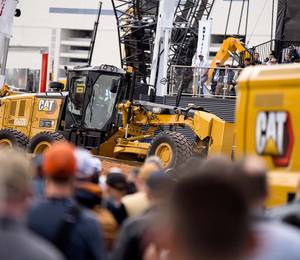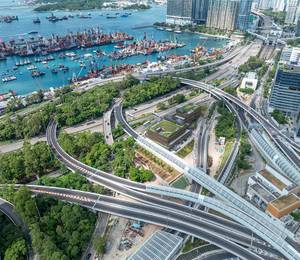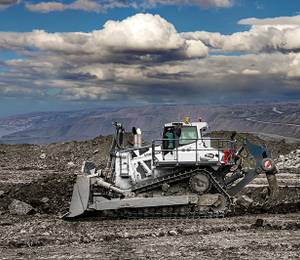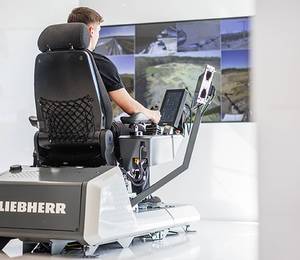Surbana Jurong (SJ) has officially opened its new global headquarters, located within CleanTech Park in Jurong Innovation District (JID), Singapore. Covering a built-up area of 1,200,000 sq ft, it can accommodate up to 4,000 onsite employees and the wider community.
For the first time since SJ’s formation as a collective of built environment consultants in 2015, employees from different entities in Singapore finally congregate under one roof. The new campus has been designed with both the SJ community and the community-at-large in mind.
Dubbed ‘Campus in Nature’, the new SJ Campus also serves as a strategic centre for collaboration, learning, and a living lab for innovative solutions for the built environment. It was designed by Safdie Architects working with SJ’s architects. The civil and structural engineer for the project was KTP Consultants, a member of SJ. [Scroll down to watch the video showcasing the key engineering features of the building].
“This campus is more than a global headquarters; it’s a living lab for innovating solutions and pushing the boundaries of sustainable development,” said Sean Chiao, group CEO of SJ. “Over the years, SJ has assembled a portfolio to inject new thinking and talent into the group, and fuel our capabilities to transform the built environment. In SJ Campus, our diverse talent come together to collaborate and solve our clients’ most complex problems, fulfilling our purpose, Real impact, made together.”
SJ’s multidisciplinary team undertook much of the work that brought the campus to life, providing consultancy services from architecture, landscape architecture, engineering, and project management, to workplace strategy, integrated facilities management, and security services.
Situated on a previously undeveloped greenfield site, the SJ Campus design preserves more than half of the site’s existing green space and replaces built-upon green areas with rooftop gardens, lush interior gardens, and extensive exterior landscaping. At the outset, a detailed mapping and analysis of the site was performed to plot the specific location of the existing flora, including a Banyan tree estimated to be over 60 years old.
The 10 towers of the campus are linked by a pedestrian spine and enclosed courtyards, which allow for natural light and fresh air. Other facilities include a 1,000-seat multipurpose area, a junior ballroom, rooftop terraces, a team lounge, table tennis, and soon to be opened, a gym.
The project was awarded the Singapore’s Building and Construction Authority’s (BCA) Green Mark Platinum Super Low Energy (SLE) and BCA-HPB Green Mark Platinum for Healthier Workplaces certification. The campus is designed for maintainability and deploys integrated facilities management to optimise operational efficiency. It is also WELL Pre-Certified by the International WELL Building Institute for having demonstrated a commitment to incorporate health and well-being features and practices.
Among the highlights of the new campus are:
1). Engineering for sustainability: Through design for manufacturing and assembly (DfMA), SJ constructed precast post-tensioned concrete frames in a unique arrangement, resembling inverted pyramidal cantilevered blocks. These structures form self-shading terraces, reducing solar radiation by a significant 36%. SJ’s design and engineering teams rigorously pursued a performance-based approach, aligning with key sustainability objectives of the project.
2). High energy efficiency: The campus has adopted one of the largest underfloor air distribution systems in Singapore. This provides efficient cooling from below to target occupied space and improve indoor air quality and additional energy savings of up to 16% of the cooling energy required. Other smart facilities management solutions include an Integrated Command Centre, where IOT devices leverage artificial intelligence and machine learning to monitor energy, water, occupancy patterns, and indoor air quality to optimise carbon management, and improve productivity. These active systems and natural design elements work in combination to achieve an overall energy saving of 41%. SJ Campus is estimated to save 4.4 million kWh/year operational energy savings, which is equal to avoiding 1,785 t of carbon dioxide per year, based on Energy Market Authority’s grid emission factor.
3). Renewable energy: SJ Campus has successfully integrated a next-generation solar photovoltaic (PV) system using bifacial PV panels, which can produce clean energy when illuminated on either of its surfaces. The solar rooftops in SJ Campus serve as a testbed for advanced PV technologies, energy storage and the deployment of a smart grid. Located in four towers, it has a combined energy yield of 389 MWh per year, which is equivalent to powering 120 three-room HDB flats every year. On-site renewable energy helps to offset Scope 2 emissions, saves energy costs, and earns renewable energy certificates (RECs).
4). Role as a living lab: The campus serves as an incubator for real-world urban solutions to demonstrate the scalability of emerging technologies to the built environment industry. SJ is working with BCA to test-bed low carbon technologies to save energy and improve occupant health.
The opening of the new SJ Campus “marks a significant milestone in SJ’s evolution,” said Chaly Mah, chairman of SJ. “We have a strong platform to continue our aspiration of becoming a leading global architecture, engineering and design consultancy. As we open our doors to the wider community, we invite all to join us in shaping a smart, resilient and regenerative future.”
Images 1, 2 & 5: Surbana Jurong
Images 3 & 4: Tim Hursley
Video: Surbana Jurong
